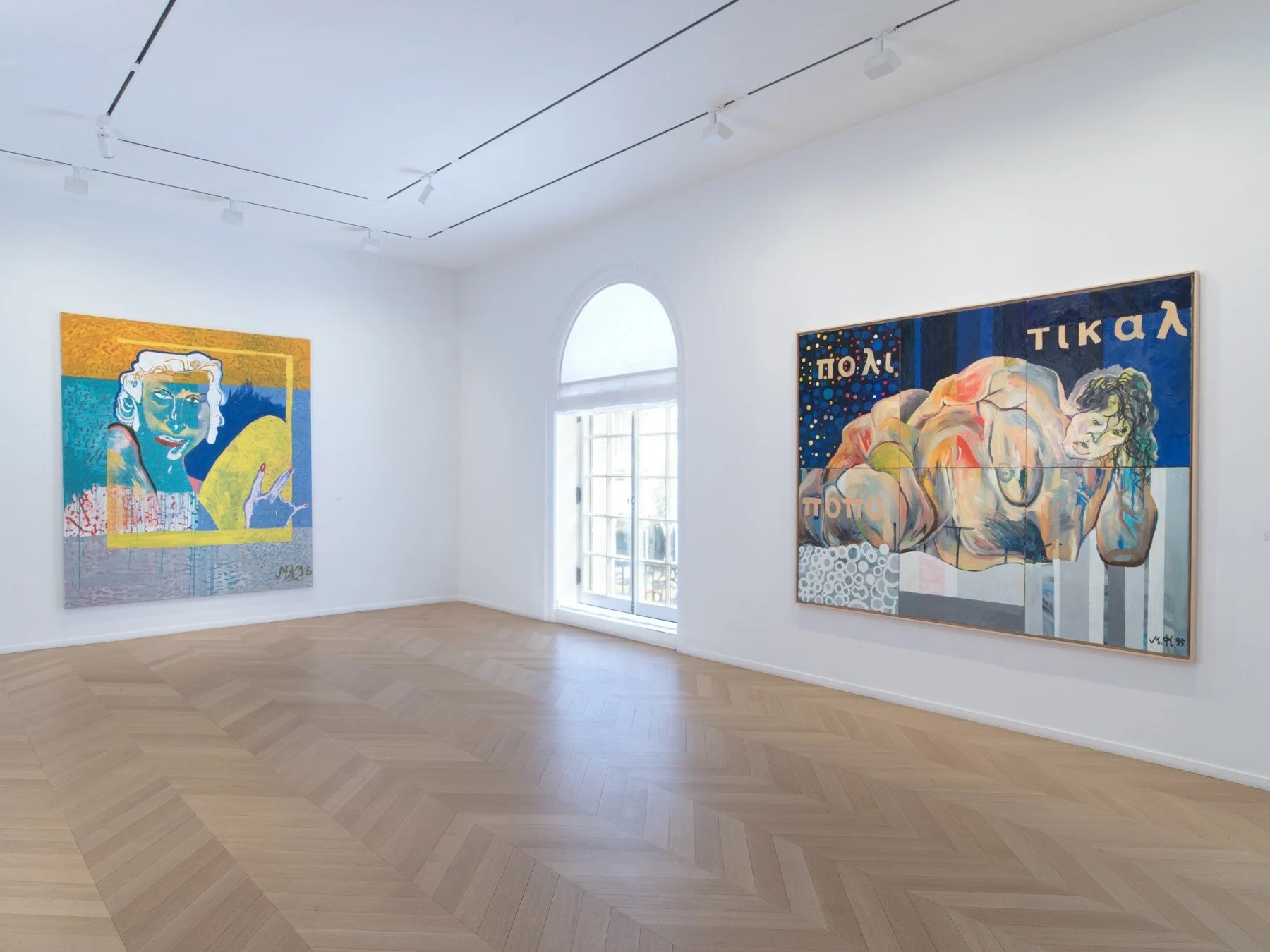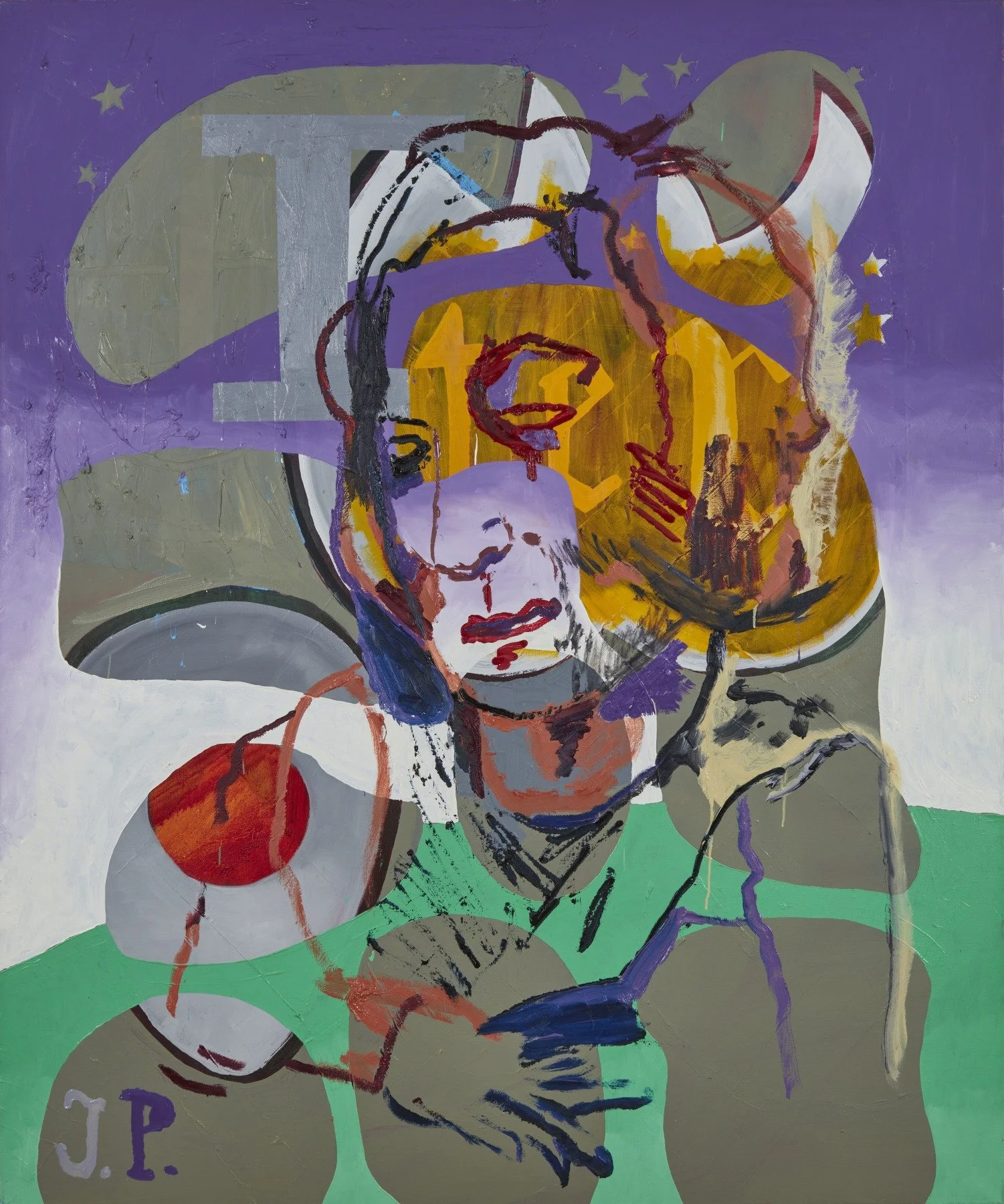MARTIN KIPPENBERGER: THE LATE PAINTINGS
Skarstedt is pleased to present Martin Kippenberger: The Late Paintings –– an exhibition dedicated to the wildly heterogeneous production of Kippenberger’s final years.
May 7 – June 28, 2025
Picasso looms large throughout Kippenberger’s life. Almost always described in mystical terms as a sorcerer or magician, Picasso is the paradigm of the unimpeded genius, the epitome of the modernist painter-hero who never ceased to reinvent himself, even in his old age. As his biographer, John Richardson, recounts, Picasso was highly conscious of the importance of a “Great Late Phase” in solidifying his place in the art historical pantheon.
Like Picasso before him, by the mid-1990s, after years of hard living, Kippenberger was increasingly aware that he too was entering his Late Period. However, instead of Picasso’s virile musketeers, with his Egg Paintings, Kippenberger cast himself as the Eggman as he deployed the egg, in its various guises, to perform an incisive critique of the cultural status quo. An equally ironic and iconoclastic act, the invocation of the egg marks a refusal of the heroic self-fashioning that dominates Picasso’s late work.
In 1996, Kippenberger explicitly resumed his identification with Picasso for the series, Jacqueline: The Paintings Pablo Couldn’t Paint Anymore, but this time, he set out to achieve what even the master of modernism could not: to paint his grieving widow, Jacqueline. Yet Kippenberger’s triumph over Picasso is undermined by the signature stamped on the canvas: ‘J.P.’ (Jacqueline Picasso). It is as if, when applying the final stroke which would cement his triumph, Kippenberger’s identity disappeared into the surface of the painting only to be replaced by the spectral presence of the model whom he had been painting.
In this way, we begin to question if we can really identify a so-called Late Period in Kippenberger’s oeuvre at all. These paintings, in their radical heterogeneity, seem to prohibit any chronological periodization whatsoever. And they can furthermore only be considered ‘late’ according to the mythologized biography of the painter whose early death lends them an air of tragedy. However, the paintings gathered here seem to undermine the very authority of the modernist painter-hero who could ensure the validity of such a periodization. Once liberated from a heroic chronology, Kippenberger’s late paintings no longer seem to represent a coda, a grand finale, or some neat conclusion to his career; rather they seem to represent an opening –– the latest evolution of a body of work which thwarts reductive interpretations and continues to generate proliferating meanings.


